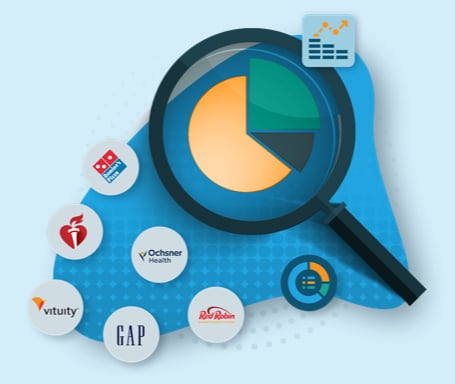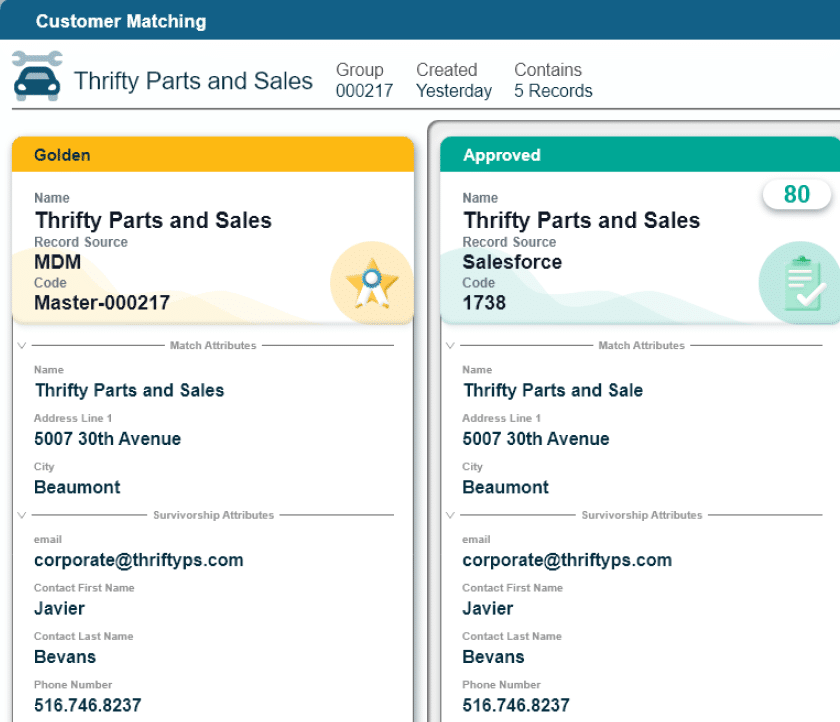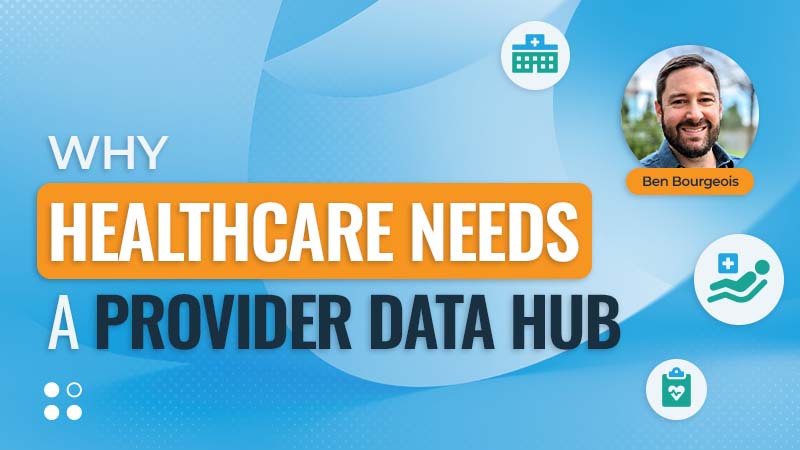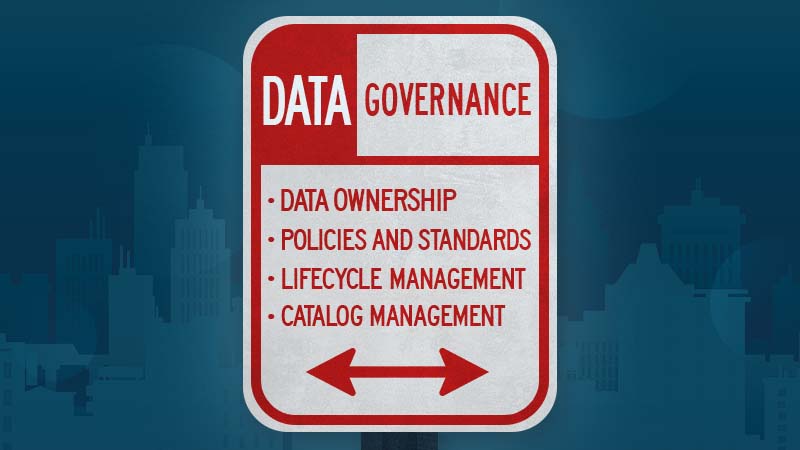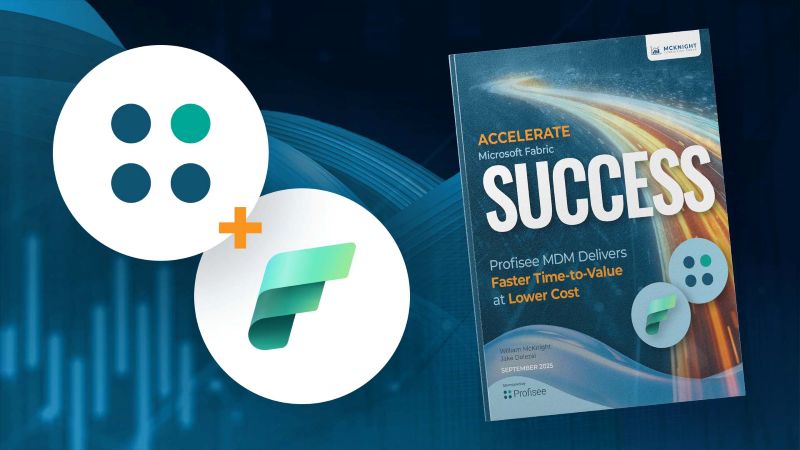Table of Contents
Updated on November 12, 2024
If you’re considering a data governance or data quality project at your organization — or are otherwise trying to improve data quality and unify data across your multiple systems — you may have heard of the term master data. Here, we explain just what master data is, the role it serves in your organization how it relates to other reference data throughout your enterprise.
Master Data Defined
We’ll start off by defining what master data is. Master data is the core, non-transactional data used across your enterprise, including customers, products, supplier locations and chart of accounts.
Let’s start with an example. If you look at a standard table of data — say, from your ERP, for example — you can see the transactional data like the order date, number, quantity and sub-total. These values are typically unique and accumulate quickly — your retail store may process thousands of order per day, for example.
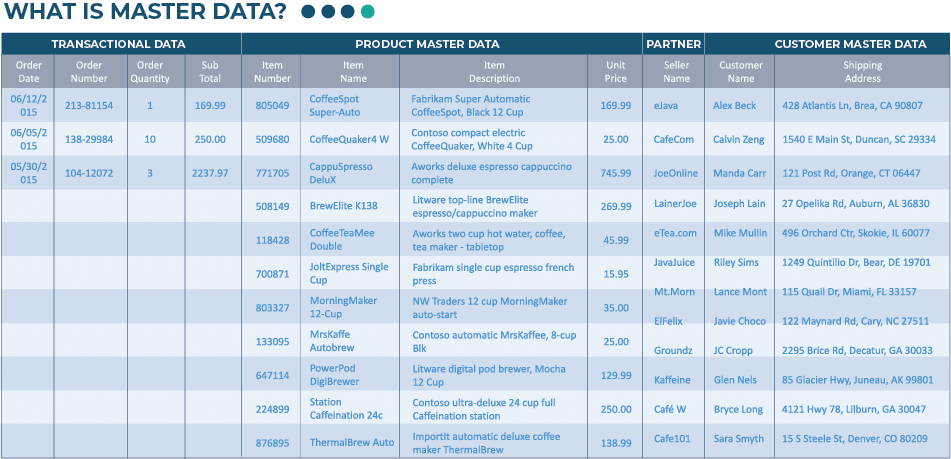
But you’ll also see data involving your customers, products and partners that we consider to be master data. The item number, the description and the unit price all comprise our product master data — one example of what we call a domain that’s embedded within this data set.
We also have customer master data, including the customer names and the address we ship to. And then we also have the seller name, which is an example of seller, partner or distributor master data.
These are just a few examples of master data that you can see embedded within these transactions. And then we have separately from that, the actual transactional data. There’s a key distinction between transactional data and master data, which we’ll explain in the context of the full data set.
Master Data in the Context of the Full Data Set
Each of these categories, or domains, of master data are what we consider to be the “nouns” that describe your business. Like we mentioned above, these can be your customers, products, suppliers, locations and chart of accounts — the core data assets that you use within your organization.
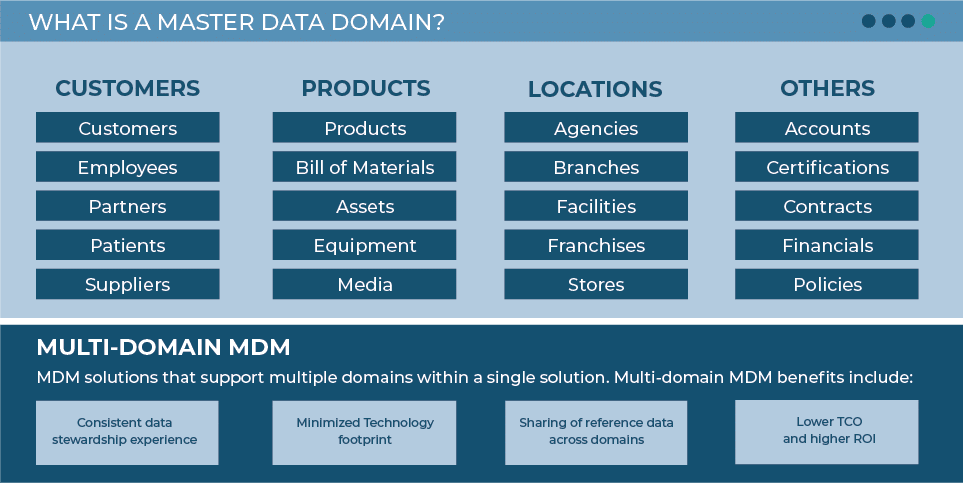
It’s also important to note that master data is not transactional data; rather, it describes transactions. In the example above, transactional data includes the invoice number, invoice date and the sub-total while the master data that describes the transaction in more detail, e.g., the product that was purchased, the customer who ordered it, the vendor that supplied it, etc.
Now that we’ve identified master data in the context of a transactional data set and classified them by product, customer and partner domains, let’s dig into a few more details of master data.
Master Data Changes Slowly While Reference Data Can Change Frequently
A customer could be a person (B2C), a business (B2B) or end-user who buys from one our business customers (B2B2C) — and each of these changes over the course of time. A customer has a name; they might have an address, and that address might change when either a business or customers moves.
But those changes are fairly slow-moving. The nature of a person, business or product typically evolves slowly over time. It’s the reference data that changes quickly in your data set. In the context of the product domain, there’s often several attributes of reference data that we use to describe the product, e.g., color, packaging, size, weight etc.
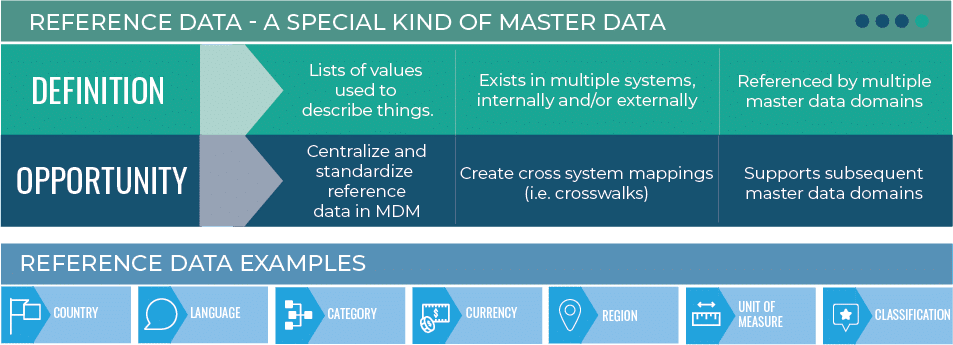
Master Data Includes the Relationships Between Your Data
When we talk about a given master data domain, that domain is defined by all the attributes that describe it. These properties, then, form the relationships within in the master data. For example, your organization’s regions may roll up territory, while a product may be comprised of individual components.
The process and concept of master data management, then, isn’t just limited to the master data itself, but the these relationships that we’re looking to maintain and manage as well.
Master Data is Smaller in Volume But Higher in Complexity
In exploring the concept of master data and framing it in the context of a larger data set, we’ve confirmed that master data is critical data. Yet, when you look at the totality of data that you have across your enterprise, master data is likely a small share the total data you store, manage and govern.

But master data is among the most complex data you own and is often the most valuable to your organization. So whether you’re considering a Customer 360 implementation, data quality project or other digital transformation, these initiatives are often considered in order to have a clean, accurate representation of our customers, products or more.
So even though master customer list may be a relatively small amount of information in the grand scheme of the data throughout your enterprise, you’ll find that it is at the core of your ability to improve business outcomes and provide the foundation for innovation and transformation.
Interested in learning more about master data management? Contact us so you can start on the path to building a trusted foundation of key enterprise data today.
Video Transcript
So we’ll start off by just defining what master data is. You can see here on the screen we have a sample set of data. These look like order transactions. And it has some transactional data around the order date, the quantity, but it also has obviously some data around products and customers and partners. So embedded in here is some examples of master data. So here we have the names of the items that were included in each order line item. And that, along with the item number, the description, the unit price all comprise our product master data. So that’s one example of a domain that’s embedded within this data set. We also have customer data, so the customer names and the address we ship to. That’s all an example of master data. And then we also have the seller name, which might be example of a partner, a distributor, as well. So those are three examples of master data that you can see embedded within these transactions. And then we have separately from that, the actual transactional data. So there’s a distinction that we’d like to draw between transactional data and master data, and we’ll dive into that a little more deeply here shortly.
Data Set
So, master data defined. What are we really talking about when we use the term “master data”? Obviously, that leads into master data management. So master data, we typically refer to it as the nouns that describe your business. The nouns could be your customers, your products, your suppliers, your locations, and your chart of accounts; all these different things that you typically manage, these core data assets that you use within your enterprise. It is also non-transactional data. So in the prior example, we saw some transactional data as well as some master data. MDM is non-transactional data, but it describes transactions. So transactional data would be an invoice line item with the invoice number, the invoice date, and the dollar amounts for that, and then the master data would be describing that transaction further: the product that was purchased, the customer that ordered it, the vendor that supplied it, etc. So that’s the master data that we’re really concerned with in MDM.
Master Data Defined
Master data is slowly changing. A customer could be a person or a business, and that business is changing over the course of time. So someone has a name. They might have an address. That address might change because either the business moved or the individual moved. But those changes are fairly slow-moving, right? So the nature of a person or a business or a product typically evolves slowly over time. There is reference data that supports the management of master data. So in the context of, the product domain, there’s a lot of reference data sets that we use to describe the product. So the color of the product, the packaging of the product, the size, the weight, etc., those are all reference data elements that help describe a product.
So when we talk about a given master data domain, that domain is defined by all the attributes that describe it. So it’s all the attributes of a product or all the attributes of a customer. So those attributes are the properties of it. And then there’s also relationships with the master data. So this organization rolls up to that organization or this product is made up of these components. So in addition to just the master data itself, there’s also relationships that we’re looking to maintain and manage, as well.
So the key thing is that master data is important data. In your organization, if you look at the totality of the data that you have in storage, master data is a relatively small amount of data from a volume perspective, but it’s typically some of the more complex data that you have and it’s also the information that’s most valuable to maintain and manage. So having an accurate representation of your customers is a very valuable exercise, even though your customer list or your master customer list is a relatively small amount of information in the grand scheme of the data you have within your enterprise.
Other Blog Posts in This Series

Eric Melcher
Eric has spent the entirety of his 15+ year career working in the enterprise information management space. As Chief Technology Officer, Eric is responsible for all aspects of product management, development and support for Profisee’s software portfolio.
